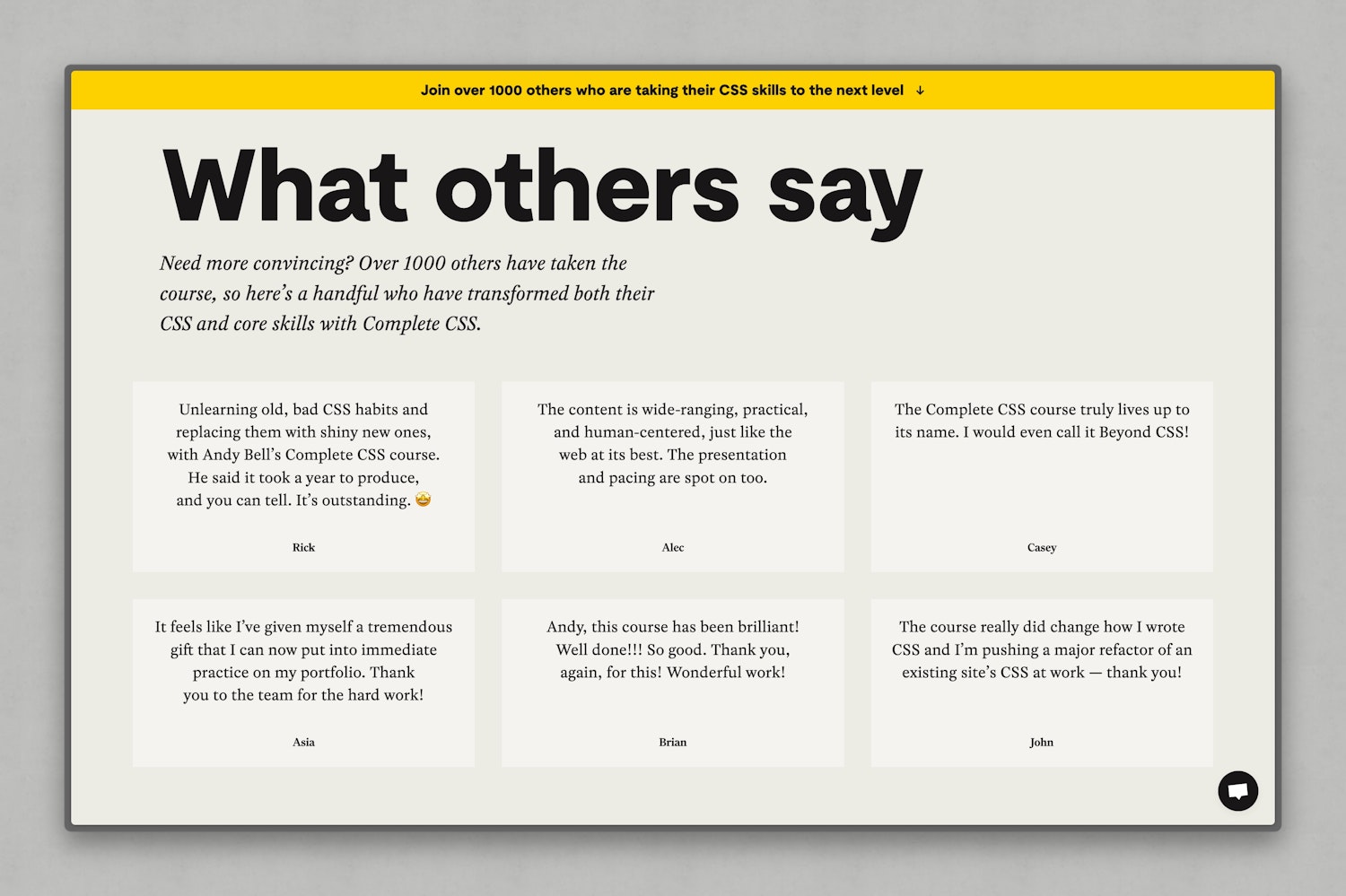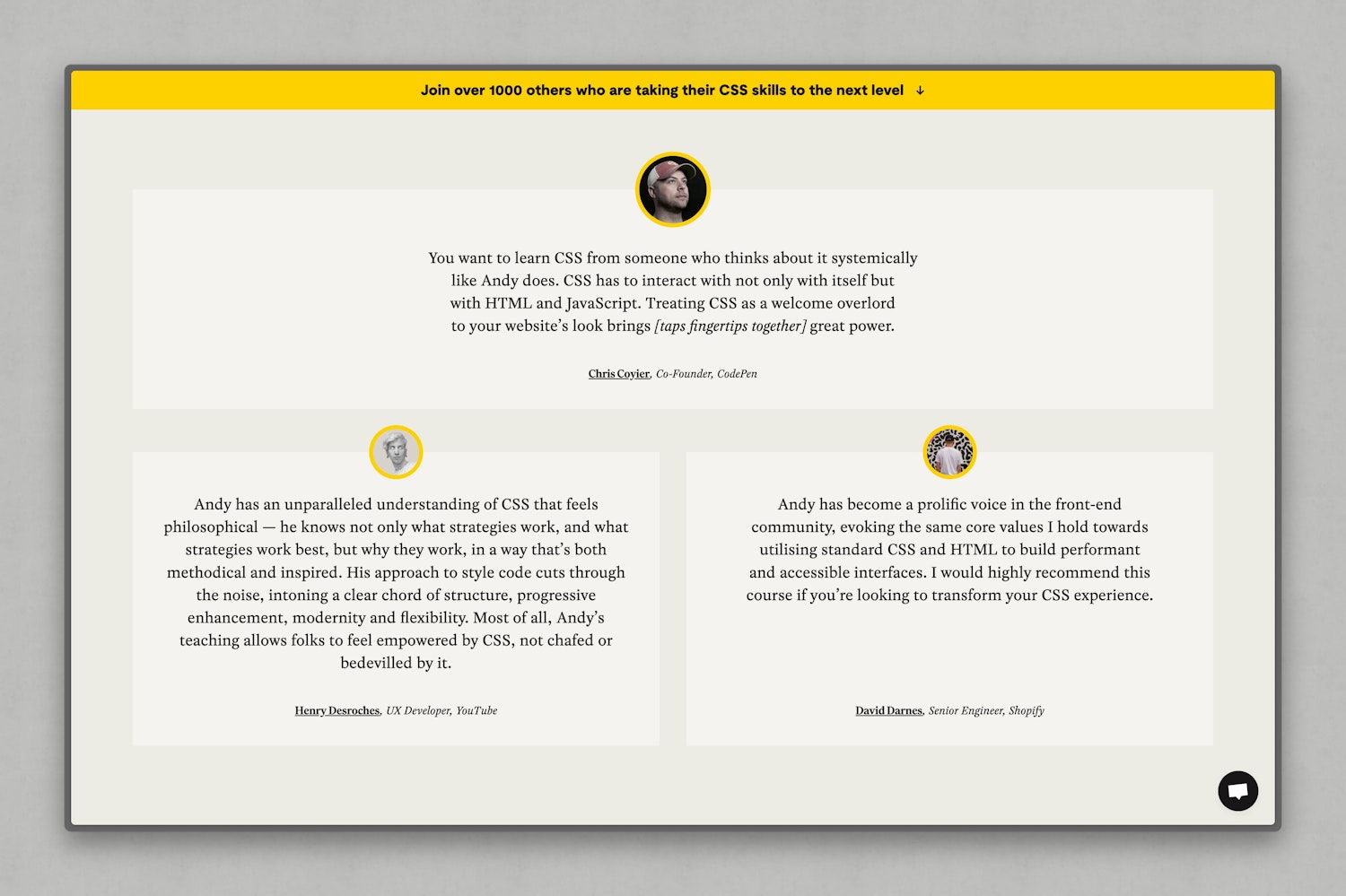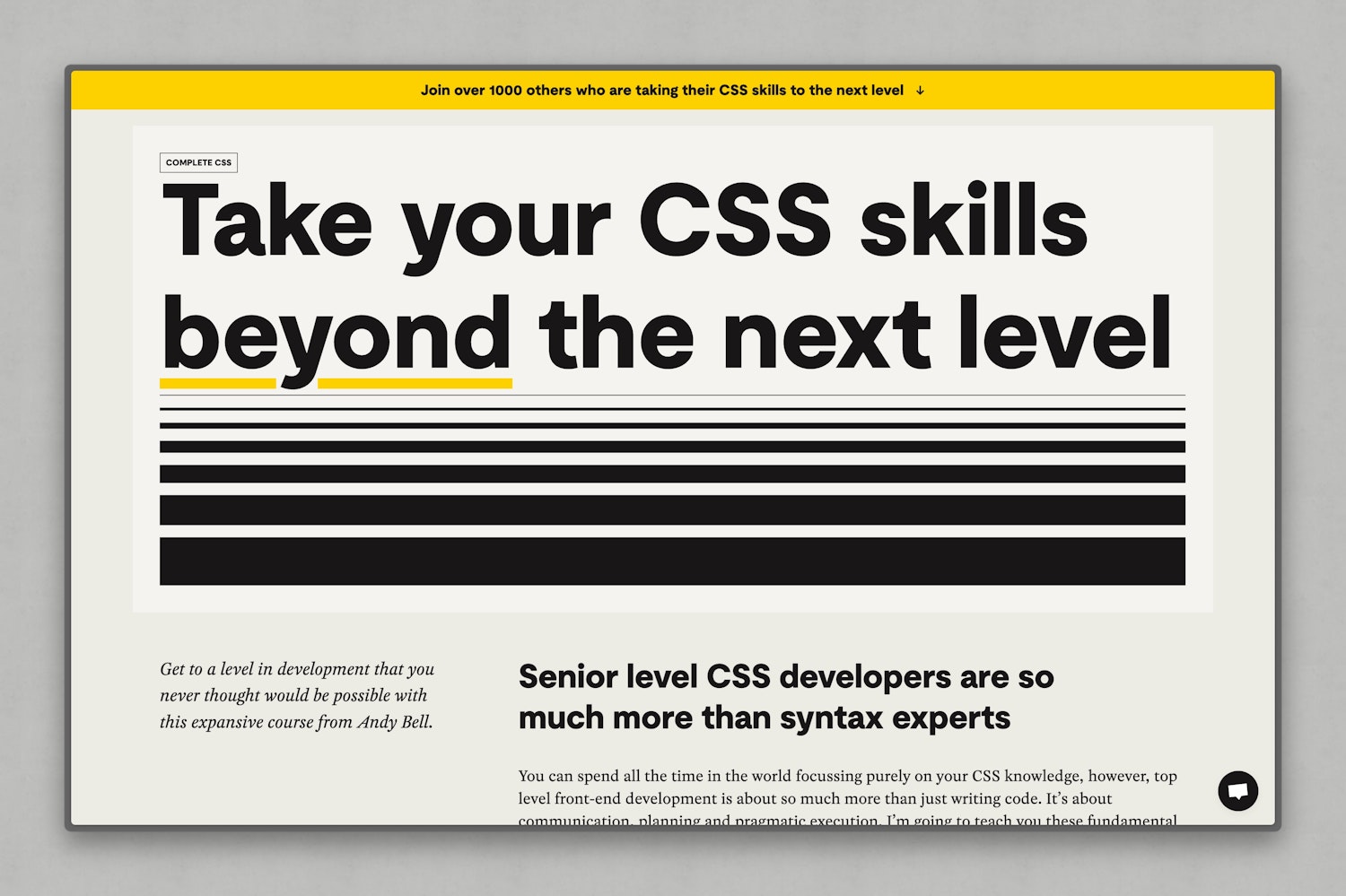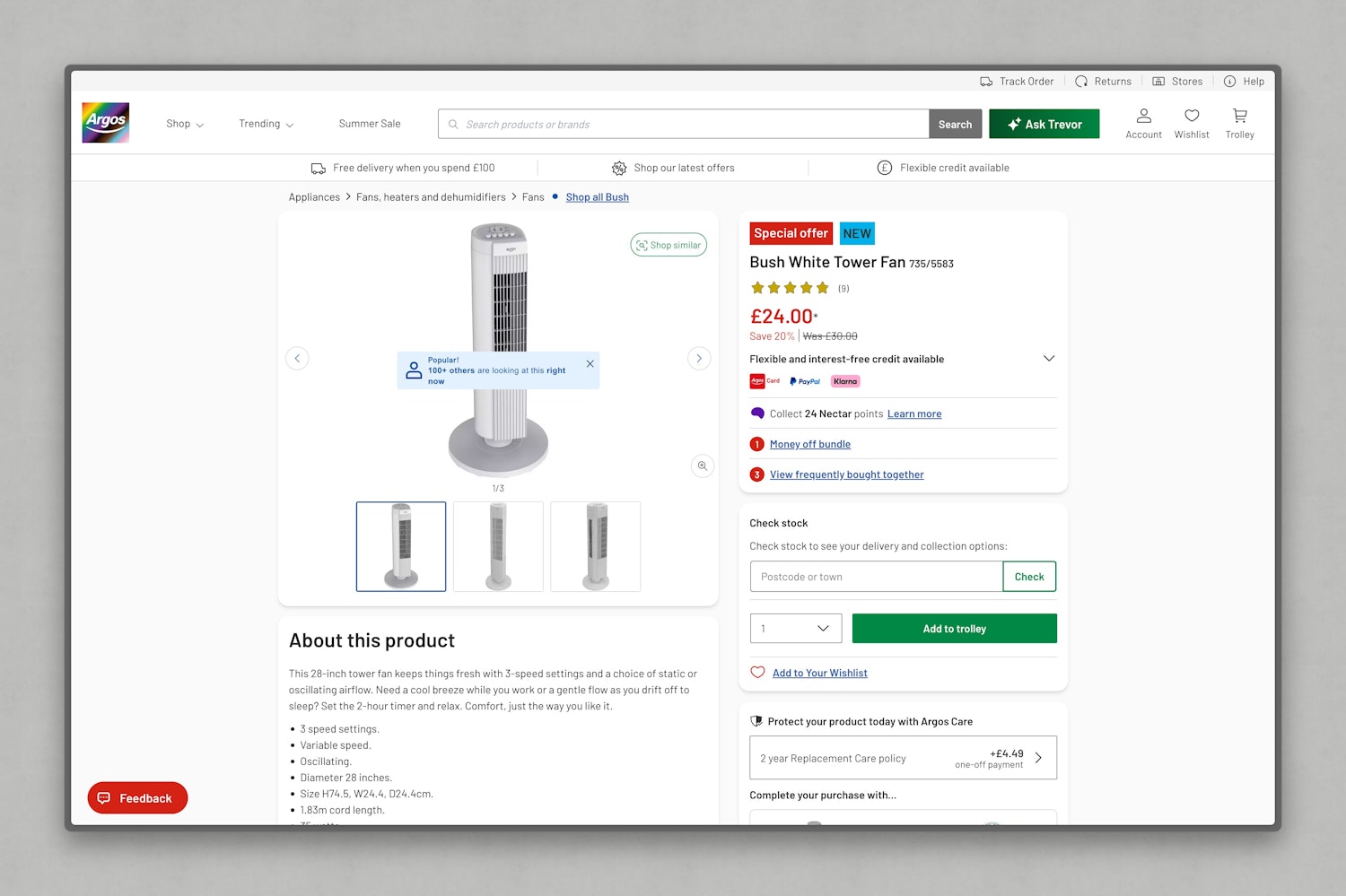Let’s talk about conversion optimisation and how we’re approaching it
Conversion optimisation is exactly what it says on the tin. It’s a methodology to try and smooth the path as much as possible for a marketing/landing page with a single goal: get a conversion, be it a sale, a signup or anything that achieves a key performance indicator (KPI). Often conversion rate optimisation (CRO) leverages deceptive patterns to get the job done though.
A deceptive pattern is probably best thought of as a tactic to manipulate an individual — psychologically — to con them to do what you want them to do on your page, rather than what they likely initially set out to do.
Deceptive patterns work, which is why they’re everywhere, but there’s an ethical cost to implementing them. An ethical cost we’re never interested in paying here because ultimately, we respect our user base.
Let’s have a look at some popular methods of CRO and which ones we’ve opted for on the course marketing pages.
Social proof
This is a psychological phenomenon which essentially boils down to humans correcting their behaviour based on their peer’s behaviour and yes, marketers love to exploit this.
Probably the most common way that social proof is utilised is with testimonial-like content. This might be quotes or Trustpilot reviews. What you’re aiming for — when utilising social proof — is the feeling of “my peers like this, so I will probably like this too.”

We lean into this methodology on the course marketing page for Complete CSS because — in our opinion — if you apply social proof tastefully and with consideration, it can be really useful.
For example, these are people that have purchased and enjoyed Complete CSS. As we see it, it’s a good idea to display these quotes because someone might have doubts, even if the marketing page has done its job of outlining the benefits of taking the course. It’s rather important to determine if a course is actually going to be good before you purchase because the tech industry is — well — a bit of a snake oil pit 😬. We’re trying to reassure with this pattern, rather than manipulate.

Another way we use social proof is selected quotes from well known names in the industry. The reason we use these is because if a user comes in cold — as in they’ve never heard of Complete CSS or the author (me) — they might recognise Chris Coyier for example. Knowing that Chris says nice things about the author’s writing might be just the nudge a user needs to at least explore the marketing page some more.

Lastly, we leverage how many people have purchased a course as a social proof signal too. Nothing encourages trust quite like seeing lots of people have already purchased a course.
Above the fold
Let’s start with the definition first. “Above the fold” is the area immediately visible to the user on page load before they scroll. It’s something that found its way to the web from print media as “above the fold” is a reference to broadsheet newspapers.
A very aggressive marketer will try to stuff as much information as possible “above the fold” because data — such as reported in this Nielsen Norman Group study — will tell them that the majority of users will spend the most time viewing content above the fold.
A shallow translation of that would be “if people spend most of their time above the fold, we need to put as much information and actions in there as possible”. That fails to consider the following though:
- Optimising for the fold is near-impossible when we have no idea how big a user’s viewport is
- Users may indeed spend a lot of time “above the fold”, but do they bounce after that? If so, that points to the “above the fold” content not engaging the user so be mindful implementing a hard-sell right from the start

We opt for a different approach: good messaging. Typically, when a user lands on Complete CSS they see the above. There’s a bold headline — “Take your CSS skills beyond the next level” — that is supported by a summary:
Get to a level in development that you never thought would be possible with this expansive course from Andy Bell.
This is immediately followed by prose content, headed with another eye-catching headline: “Senior level CSS developers are so much more than syntax experts”. Instead of trying to catch a quick sale, we’re instead, gently nudging the user to what’s important: what is this course actually going to do for you?
Interstitial popups
Quite possibly one of the worst patterns on the web: an annoying popup that steals your focus. You know the type, an immediate “sign up to our newsletter to receive a 10% discount” pop up arrives as soon as you and on a page.
If you pop up a dialog box in my face the very second I visit your site, I’m not sticking around and bushwhacking through your digital weeds to get to what I was trying to do in the first place. I’m out.
That’s on you for having a mess of a site and frankly being a little rude.
The theory for marketers is that if you “grab attention” (literally), you’ll increase the odds of getting a conversion. We respect our users though, rather than hedging bets on a cheap conversion opportunity.
The Nielsen Norman Group did a good study back in 2017 where they outline how disruptive modals/dialogs/popups can be when utilised for the wrong reasons, such as interrupting the user’s workflow, causing a user to forget what they were doing and worst of all, they block the content behind which presents an accessibility risk.
As that study goes on to address, there are good uses for popups. For example, if a user is about to perform a dangerous action — such as deleting an account — a popup is a good way to deliberately interrupt the flow to be absolutely sure that deleting the account is what a user wants to do. That’s nice, defensive user experience (UX) design.
A user isn’t doing a potentially dangerous action on our course marketing pages though, so an interstitial popup — or even a triggered popup — is not a good pattern to deploy, so of course, it didn’t even get considered by us. Not to mention, it goes completely against our principles of reader experience first, always.
Fear of missing out (FOMO)
The last method I want to touch on is FOMO. Marketers will exploit the feeling of missing out to push a user over the edge. The edge being the checkout process in our context.
A double whammy here. We both get a slide-in from the bottom left corner and also a prompt to push notifications to users as a sales tactic, which is again, a deceptive pattern. Ironic that they claim to increase credibility too…
The problem with this method, aside from it being exploitative of human emotions, is that by aggressively selling a product — especially a high ticket product — is you’re opening yourself up to the risk of dissatisfied customers.
Dissatisfied customers will almost always (rightly) want a refund — which is expensive as you don’t get back the payment provider fees and currency conversion fees in our case because we charge in GBP.
What’s more expensive though is reputational damage. The last thing you want is people broadcasting their dissatisfaction with a course you’ve published, especially when that the person feels like they’ve been misled.
We see this FOMO pattern more often on lower ticket purchases on extremely optimised e-commerce platforms.
This sort of affordance creates a sense of urgency. It’s designed to make the user think “I’d better order this before they run out”. It’s even more effective when a particular item is perceived as popular from the outset too. For example, this clip was taken in a UK heatwave, where fans often sell out quite fast.
It’s important though to be aware of your offering which in our case is a higher ticket course sale. That process should be slower and more considered so the people who actually want to buy it, buy it, happily.
I’ll take a happy user base over a user base that feels like they were misled into a purchase. Sure it might hit the sales targets, but that’s fine as far as we’re concerned. The risk of reputational damage is far more important to avoid in our case.
The marketing page’s job is to close, not to sell
In sales, closing a sale is the tough part. It’s the point where you convince a customer to give you their money. It’s the primary reason why our marketing pages — in fact, most stuff we design for ourselves and client — is section-based.
The job of each section is to reassure because we’re optimising for warm-to-hot leads rather than cold leads as a priority. Let me break down what I mean by that.
The funnel for Complete CSS is complicated because there’s many entry points. For example a user could land on Complete CSS from:
- A social media post by Piccalilli or myself
- The end of a blog post, written by me
- A social media post/blog post by someone recommending the course
- A YouTube video
- An LLM, such as ChatGPT (yuck)
Each of these entry points are warm because the user likely has some context already about the course, or at least my reputation. We lean into that with the structure of the marketing pages. They’re designed to inform, rather than sell hard.
It’s partially why advertising the course in newsletters etc. has been rather unsuccessful because all of that context is missing, which suddenly makes that user a cold lead. What we need for those situations is a very specific, harder-selling marketing page, often called a CRO page.
This need for context might pose as a potential problem that we have to solve in the future, depending on work that course authors do before and after their courses go live. What we’ve done to maintain our methodology of closing and keeping their visitor-base informed with context already is set out a “battle plan”guide that we hand them as soon as the contract is signed.
In essence, we’re advising authors to do a lot of authentic off-site work to “warm up the leads”. This off-site work includes:
- Appearing on podcasts
- Writing articles and publishing on other publishers — not just Piccalilli
- Investing time into publishing on their own blogs
- A constructive presence on social media (with the odd shitpost, naturally)
- Building trust overall that they are the person to learn from
This is fundamentally what it’s all about when selling courses: trust. People need to trust in your ability to teach them well. The perfect way to demonstrate that is to give away way more than you take. It’s something I’ve done for years and will continue to do so.
Wrapping up
The key takeaway for people working with conversion-based design is that you can read thousands of articles that’ll instruct you to use Tracker Tool X or Tracker Tool Y, but it’s actually all about context and understanding your market. A surveillance tool ain’t gonna do that for you.
In our context that’s an unacceptable way of working and will scream desperation too. That’s not a good way to build trust is it?
Instead of collecting heaps and heaps of tracking data on your landing pages, you need to do the research up front to understand who you are selling too, what resonates with them and what turns them off. There’s always room for experimentation to optimise — just like we have — but try to be pragmatic with your experimentation.
By being pragmatic and trustworthy, you’ll sell to people that really want your course/product/service. That sets you in a much stronger position to maintain a relationship with the customer in the much longer term and maintain a good reputation, which is always a good thing.
It’s all about prioritisation at the end of the day. Do you want to squeeze every last penny out of users, no matter what? Leverage deceptive patterns. But know that when you do, you will do serious reputational damage. It’s not even worth considering in our opinion.
Loading, please wait…
Powered by Postmark - Privacy policy
Our aim with open working projects is to provide progressive movements with excellent web experiences and to also provide the tech community with elite, real world education.
We can only do this with your support though! For us to continue delivering this work, we need to replace our revenue from commercial client projects. Your support with either a pay what you can afford monthly donation, or a one-off donation will go a long way to doing exactly that.
Support Piccalilli
and see how we’re planning to make a genuine, positive impact